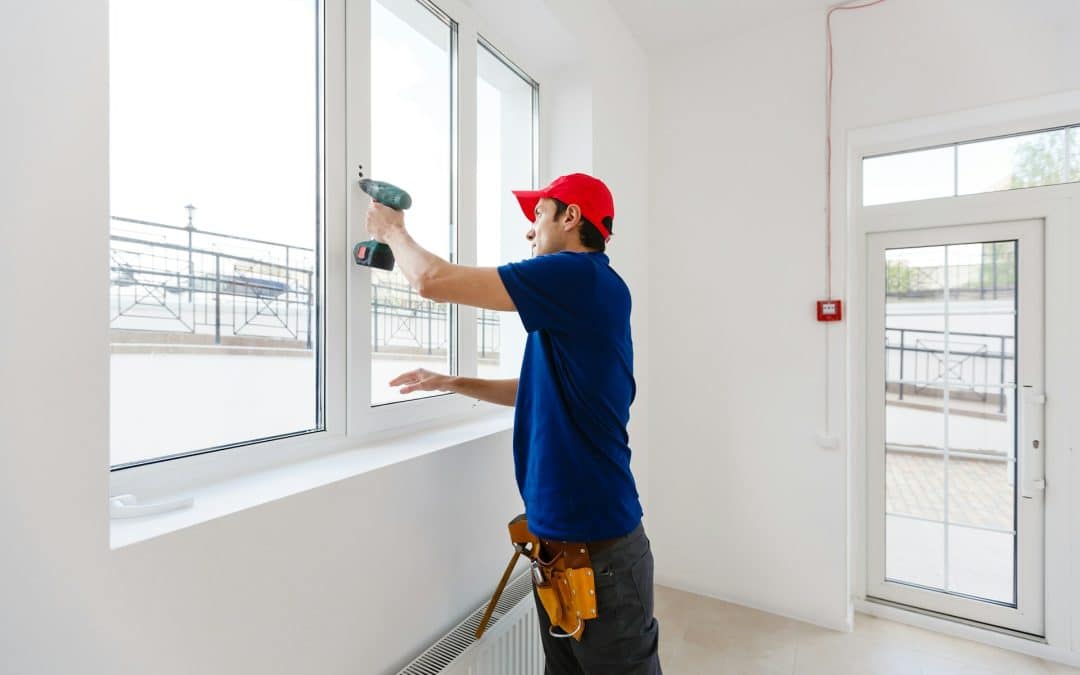Getting ready to replace your windows? The first step is making sure your measurements are spot on. It might seem simple, but it’s an easy place to go wrong. One small mistake can lead to delays, extra costs, or a window that just won’t fit right. Taking your time upfront to get the measurements right can save you a lot of trouble later.
If your measurements are off, even by a little, your window could arrive too big or too small. That means more waiting, more work, and more money out of pocket. That’s why understanding how to take accurate measurements is one of the most important parts of planning a window replacement project. Skip the guesswork so your install goes smoothly.
Tools You’ll Need
Before you start measuring, gather the tools that will help you get clear and accurate numbers. You don’t have to stock up on a bunch of high-end gear. Just a few reliable tools will get the job done right.
Here’s what you’ll need:
– Tape Measure: Get one that’s sturdy, at least 25 feet long, and easy to read. A locking feature helps keep it in place while you record measurements.
– Notepad or Smartphone: You’ll need to write your numbers down right away so nothing gets mixed up later. Most people measure a few windows at once, and it’s easy to confuse one with another if you don’t track carefully.
– Pencil: For making light markings if needed. Choose one you can erase easily if necessary.
– Step Ladder: Helpful for taller windows, especially if you need to reach the upper corners.
– Flashlight: Good lighting makes a big difference. A flashlight can help you see joints or inside corners better, especially in areas with limited daylight.
– Level (Optional): A small level helps you check frames that may be crooked or warped, which can impact how you measure.
Keep all your tools organized so you don’t waste time looking around for them. Work slowly and double-check each figure as you go. If your home is older or was built with custom features, you might find that no two window dimensions are exactly alike. That’s totally normal.
Step-by-Step Measuring Guide
Taking window measurements is about being precise every time. You’ll need to measure width, height, and depth, and each has its own technique. Don’t guess or round up. Use actual numbers and always record the smallest measurement.
1. Measure the width
Take three width measurements: one across the top, one across the center, and one along the bottom inside edges of the frame. Use the inside frame, not trim or molding. Write down the smallest of the three as your final number. If your home has settled over time, the top and bottom widths may not match.
2. Measure the height
Take height measurements from three spots too: left edge, center, and right edge. Start from the sill and measure up to the top of the inside frame. Again, the smallest number is the one to use moving forward.
3. Check window depth
Depth tells you how thick the wall is where the window will sit. Open the window, if possible, and measure from the inner edge of the frame on one side to the inner edge of the other. If the window doesn’t open, look for a way to measure through or around the frame without including trim or casing.
Avoid mixing up interior and exterior measurements. Replacements are always based on the frame opening on the inside. Another issue people run into is rounding. Resist the urge to clean up your numbers by rounding. Even a slight mismeasurement can throw the fit off enough to need changes after the fact.
For each window, mark its location clearly. Label your notes with room names or placement details like “Kitchen side window” or “Upstairs left”. Keeping things organized this way speeds up ordering and installation down the road.
Tips For Special Window Types
Not every window is a simple rectangular shape, and when dealing with more unique types, measuring takes a bit more technique and care. Knowing the right way to measure different designs helps you avoid surprises once the new unit arrives.
– Bay Windows
Bay windows usually have three panels angled together to create a protruding section. Measure each panel separately—left, center, and right—and record both the height and width of each one. This helps make sure each window fits its specific place while maintaining the proper angles.
– Bow Windows
Bow windows feature four or more sections that curve in an arc. Measure each pane like you would a bay window: individual width and height for each. Flexible tape measures work best here since you need to account for the curved layout.
– Double-Hung Windows
These slide vertically, often using tracks inside the frame. Measure only the frame area that holds the sashes. If the sides seem worn or bowed, check carefully to be sure you’re capturing the actual structural opening.
– Casement Windows
These open outward on hinges and may have cranks. When measuring, stay within the interior frame and exclude the crank hardware. Some casement windows have deeper frames, so don’t skip measuring the depth accurately.
If your windows look unusual or don’t fit any categories here, take a clear photo and compare it to designs online before attempting to measure. This can give you a better idea of the approach to use.
When To Get Professional Help
There’s no shame in needing help. Sometimes window setups are too complex, or the house is built in a way that makes exact measuring a real challenge.
Here are signs you should bring in a professional:
– The window frames look uneven or not square
– Frames show signs of moisture damage, rot, or swelling
– You can’t figure out where the window frame ends
– The window is tough to access (like on upper floors or tight spaces)
– You plan to change the style or add something custom
Small mistakes in this early stage have a way of snowballing. If the opening isn’t measured correctly, the new window may not fit. That could mean shipping delays, expensive returns, or a lot of frustration during installation. Experts have done this hundreds of times and know how to spot the oddities that a basic tape measure can’t catch.
Hiring a pro also helps uncover problems hidden behind your walls or trim. You might not be able to tell that a window frame is shrinking or shifting, but an experienced tech can. That kind of insight saves you time and keeps your home protected in the long run.
Think of window measurement like setting a foundation. Get it wrong, and things won’t sit right. Get it right, and everything that follows becomes smoother.
Why Accuracy Upfront Makes All the Difference
Getting your window measurements right means more than having a new window that looks good. A proper fit keeps your home comfortable all year long. It blocks drafts, resists outside noise, and boosts energy use by sealing gaps where air can sneak in or out.
When the window sits tightly in place, there’s no need for excessive caulking, patchwork, or adjusting trim. That cleaner install leads to less upkeep over time. You’ll also avoid the disappointment of delays from wrong-size orders.
Precise measuring gives you a reliable base, whether you’re replacing one window or several. There’s peace of mind knowing you won’t hit an unexpected snag mid-project. That peace shows up in quieter rooms, steadier temperatures, and bills that don’t swing wildly season to season.
If you’re ever unsure, don’t just roll the dice with numbers. The expert team at American Windows of DFW can make sure every window fits exactly how it should. Accurate measuring leads to proud results—and that’s why it matters.
Make the most of your next upgrade with windows that actually last. Learn how American Windows of DFW can help with expert window replacement that improves comfort and energy use all year round.

